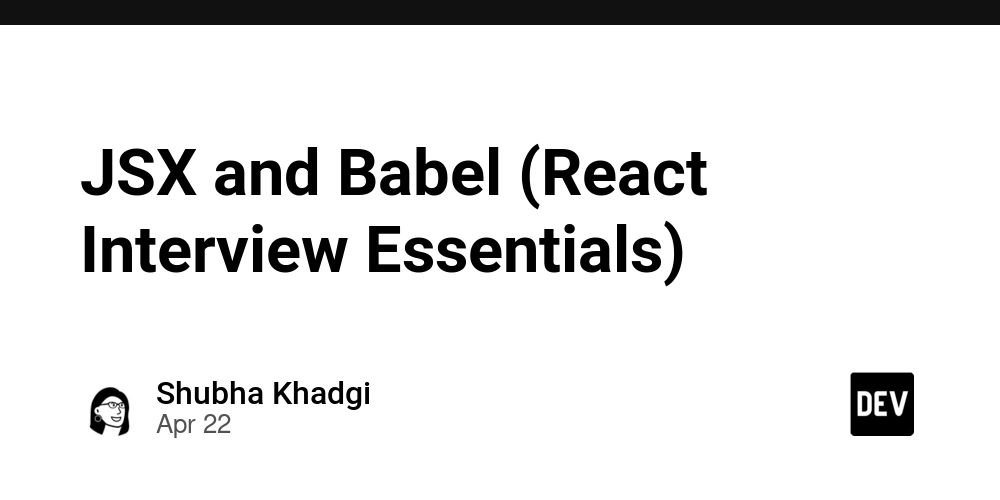Building SOAR Playbooks To Respond To Common Web-Based Attacks
Web-based attacks remain one of the most persistent threats to modern organizations, targeting everything from web applications and APIs to user email inboxes. Security Orchestration, Automation, and Response (SOAR) platforms have emerged as essential tools for automating the detection, investigation, and response to these threats. The power of SOAR lies in its ability to standardize […] The post Building SOAR Playbooks To Respond To Common Web-Based Attacks appeared first on Cyber Security News.

Web-based attacks remain one of the most persistent threats to modern organizations, targeting everything from web applications and APIs to user email inboxes.
Security Orchestration, Automation, and Response (SOAR) platforms have emerged as essential tools for automating the detection, investigation, and response to these threats.
The power of SOAR lies in its ability to standardize and automate incident response workflows through playbooks, ensuring that security teams can respond to attacks quickly, consistently, and efficiently.
In this article, we will explore the technical foundations of building SOAR playbooks for common web-based attacks, provide practical examples, and discuss advanced strategies for maximizing their effectiveness.
Foundations Of SOAR Playbook Architecture
SOAR playbooks are structured, automated workflows that guide security teams through the steps necessary to detect, analyze, contain, and remediate security incidents.
For web-based attacks, a playbook must be able to handle a wide variety of threat vectors, from phishing emails and malicious URLs to web application firewall (WAF) alerts and suspicious file downloads.
The first step in building an effective playbook is understanding the integration capabilities of your security tools.
Most SOAR platforms support integrations with a wide array of security solutions, including WAFs, endpoint detection and response (EDR) systems, email security gateways, and threat intelligence platforms.
Each integration exposes a set of commands or actions that can be orchestrated within a playbook, such as blocking a URL, isolating a host, or submitting a file for sandbox analysis.
Categorizing Integration Commands And Artifacts
To design a robust playbook, start by cataloging all available integration commands and grouping them into functional categories: enrichment, containment, recovery, and case management.
Enrichment commands gather additional context about an alert or artifact, such as querying threat intelligence for a suspicious IP address or extracting metadata from a file.
Containment commands take immediate action to limit the impact of an attack, such as blocking malicious traffic at the firewall or quarantining a compromised endpoint.
Recovery commands focus on restoring normal operations, while case management commands document actions and facilitate collaboration among analysts.
Organizing commands in this way helps map out the logical flow of your playbook and ensures all necessary steps are covered.
Artifacts are the data points that will be processed at each stage of the playbook. In the context of web-based attacks, common artifacts include URLs, domains, IP addresses, file hashes, email addresses, and user IDs.
These artifacts serve as the inputs and outputs for various playbook actions.
For example, a phishing playbook might extract URLs and attachments from a suspicious email, enrich them with threat intelligence, and then decide whether to block the sender or notify affected users.
Mapping integration commands to artifact types ensures your playbook can handle the full range of data encountered in real-world incidents.
Implementing Playbooks For Web-Based Attack Scenarios
Once the architecture is defined, the next step is to implement playbooks tailored to specific web-based attack scenarios. Two of the most common scenarios are phishing attacks and WAF-generated alerts.
Phishing Attack Response Playbook
Phishing remains one of the most prevalent and damaging web-based threats.
A well-designed phishing response playbook typically begins when a user reports a suspicious email or when an email security gateway flags a potential phishing attempt.
The playbook starts by extracting key artifacts such as sender address, subject line, embedded URLs, and attachments.
Integrated threat intelligence services are then used to check whether any of the URLs or file hashes are associated with known threats.
If a match is found, the playbook can automatically quarantine the email, block the URLs at the web proxy, and isolate any endpoints that have interacted with the malicious content.
Simultaneously, the playbook notifies the security team and the affected user, documenting all actions taken for compliance and audit purposes.
If no immediate threat is detected, the playbook may escalate the incident for manual review, ensuring that analysts are only involved when necessary.
WAF Alert Response Playbook
- A WAF alert response playbook begins by collecting detailed alert information, including source IP address, attack vector, targeted application, and payload specifics.
- The playbook enriches this data by querying threat intelligence platforms to assess the source IP’s reputation and historical associations with malicious activity.
- It correlates the alert with recent events to identify patterns indicative of coordinated or repeated attacks.
- If the attack is confirmed as credible, the playbook automatically blocks the offending IP across all relevant firewalls and network security systems.
- Application owners receive automated notifications about the incident, including attack details and containment actions taken.
- The playbook triggers a vulnerability scan on the targeted application to assess whether the exploited flaw exists in the system.
Advancing Automation And Integration
As organizations mature their SOAR capabilities, playbooks can be enhanced with advanced automation features to handle more complex and evolving threats.
Integration with existing security infrastructure is essential for maximizing the effectiveness of SOAR playbooks.
This includes not only ingesting alerts from various sources but also normalizing data formats and ensuring that actions taken by the playbook are reflected across all relevant systems.
Malicious File And URL Scanning Playbook
A malicious file and URL scanning playbook might automatically extract suspicious elements from proxy logs, emails, or file shares, submit them to multiple sandbox environments for behavioral analysis, and extract new indicators of compromise from the results.
If a previously unknown threat is detected, the playbook can update blocklists, initiate a threat-hunting workflow to search for related activity, and share findings with external threat intelligence communities.
In the case of ransomware attacks, specialized playbooks can monitor for early indicators such as unusual file encryption activity or communication with known command-and-control servers, isolate affected systems, and initiate data recovery procedures from backups.
Continuous Improvement And Adaptation
The true power of SOAR playbooks lies in their ability to adapt and evolve alongside the threat landscape.
Regularly reviewing and updating playbooks based on lessons learned from past incidents, changes in infrastructure, and new attack techniques is essential for maintaining an effective defense.
Incorporating feedback from security analysts, leveraging machine learning for anomaly detection, and integrating with emerging technologies such as zero trust architectures can further enhance the capabilities of your SOAR platform.
Building SOAR playbooks to respond to common web-based attacks requires a strategic approach that combines technical integration, process standardization, and continuous improvement.
By automating the detection, investigation, and response to threats like phishing, WAF alerts, and malicious file downloads, organizations can significantly reduce risk, improve operational efficiency, and ensure a consistent and effective security posture.
As web-based threats continue to evolve, so too must the playbooks that defend against them, making SOAR an indispensable component of any modern cybersecurity strategy.
Find this News Interesting! Follow us on Google News, LinkedIn, & X to Get Instant Updates!
The post Building SOAR Playbooks To Respond To Common Web-Based Attacks appeared first on Cyber Security News.









































































































































































![[The AI Show Episode 144]: ChatGPT’s New Memory, Shopify CEO’s Leaked “AI First” Memo, Google Cloud Next Releases, o3 and o4-mini Coming Soon & Llama 4’s Rocky Launch](https://www.marketingaiinstitute.com/hubfs/ep%20144%20cover.png)



































































































































![From fast food worker to cybersecurity engineer with Tae'lur Alexis [Podcast #169]](https://cdn.hashnode.com/res/hashnode/image/upload/v1745242807605/8a6cf71c-144f-4c91-9532-62d7c92c0f65.png?#)























![BPMN-procesmodellering [closed]](https://i.sstatic.net/l7l8q49F.png)



















































































.jpg?#)
.jpg?#)
.jpg?#)

































































































































![CarPlay app with web browser for streaming video hits App Store [U]](https://i0.wp.com/9to5mac.com/wp-content/uploads/sites/6/2024/11/carplay-apple.jpeg?resize=1200%2C628&quality=82&strip=all&ssl=1)
![What’s new in Android’s April 2025 Google System Updates [U: 4/21]](https://i0.wp.com/9to5google.com/wp-content/uploads/sites/4/2025/01/google-play-services-3.jpg?resize=1200%2C628&quality=82&strip=all&ssl=1)













![Apple Releases iOS 18.5 Beta 3 and iPadOS 18.5 Beta 3 [Download]](https://www.iclarified.com/images/news/97076/97076/97076-640.jpg)
![Apple Seeds visionOS 2.5 Beta 3 to Developers [Download]](https://www.iclarified.com/images/news/97077/97077/97077-640.jpg)
![Apple Seeds tvOS 18.5 Beta 3 to Developers [Download]](https://www.iclarified.com/images/news/97078/97078/97078-640.jpg)
![Apple Seeds watchOS 11.5 Beta 3 to Developers [Download]](https://www.iclarified.com/images/news/97079/97079/97079-640.jpg)
































































































































.webp?#)